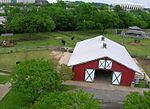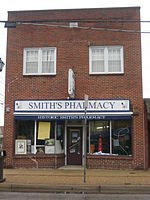Old Wythe Historic District
Colonial Revival architecture in VirginiaGreek Revival architecture in VirginiaHistoric districts on the National Register of Historic Places in VirginiaHouses in Hampton, VirginiaHouses on the National Register of Historic Places in Virginia ... and 7 more
Mission Revival architecture in VirginiaNRHP infobox with nocatNational Register of Historic Places in Hampton, VirginiaQueen Anne architecture in VirginiaTudor Revival architecture in VirginiaUse mdy dates from August 2023Virginia Peninsula Registered Historic Place stubs

Old Wythe Historic District is a national historic district located at Hampton, Virginia. The district encompasses 2,076 contributing buildings, 1 contributing site, and 1 contributing structure in a primarily residential area of Hampton. The residences include notable examples of the Greek Revival, Queen Anne, Colonial Revival, Tudor Revival, and Mission Revival styles. It was listed on the National Register of Historic Places in 2012. The neighborhood association uses the spelling "Olde Wythe." This is followed on numerous local signs and historical makers.
Excerpt from the Wikipedia article Old Wythe Historic District (License: CC BY-SA 3.0, Authors, Images).Old Wythe Historic District
Pocahontas Place, Hampton Wythe
Geographical coordinates (GPS) Address Nearby Places Show on map
Geographical coordinates (GPS)
| Latitude | Longitude |
|---|---|
| N 37.003611111111 ° | E -76.377777777778 ° |
Address
Pocahontas Place 212
23661 Hampton, Wythe
Virginia, United States
Open on Google Maps





